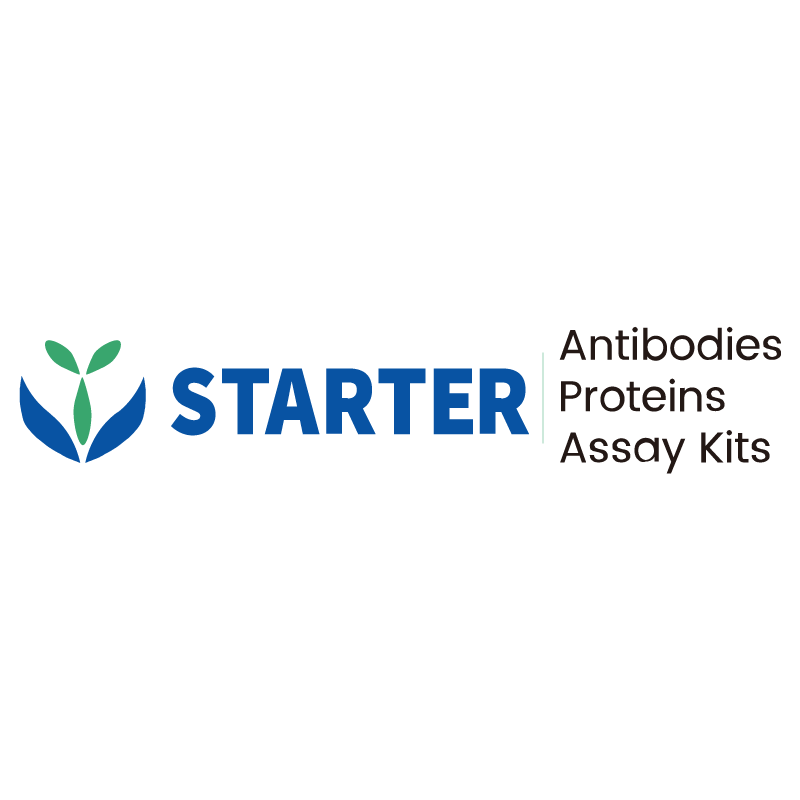WB result of Angiopoietin-like 4/ANGPTL4 Recombinant Rabbit mAb
Primary antibody: Angiopoietin-like 4/ANGPTL4 Recombinant Rabbit mAb at 1/1000 dilution
Lane 1: HEK-293 whole cell lysate 20 µg
Lane 2: HepG2 whole cell lysate 20 µg
Lane 3: A549 whole cell lysate 20 µg
Lane 4: THP-1 whole cell lysate 20 µg
Secondary antibody: Goat Anti-rabbit IgG, (H+L), HRP conjugated at 1/10000 dilution
Predicted MW: 45 kDa
Observed MW: 50 kDa
Product Details
Product Details
Product Specification
| Host | Rabbit |
| Antigen | Angiopoietin-like 4/ANGPTL4 |
| Synonyms | Hepatic fibrinogen/angiopoietin-related protein (HFARP); ARP4; PGAR |
| Immunogen | Synthetic Peptide |
| Location | Secreted, Extracellular matrix |
| Accession | Q9BY76 |
| Clone Number | S-1605-42 |
| Antibody Type | Recombinant mAb |
| Isotype | IgG |
| Application | WB, IHC-P, ICC |
| Reactivity | Hu, Ms, Rt |
| Positive Sample | HEK-293, HepG2, A549, THP-1, 3T3-L1 |
| Predicted Reactivity | Bv, Pg |
| Purification | Protein A |
| Concentration | 2 mg/ml |
| Conjugation | Unconjugated |
| Physical Appearance | Liquid |
| Storage Buffer | PBS, 40% Glycerol, 0.05% BSA, 0.03% Proclin 300 |
| Stability & Storage | 12 months from date of receipt / reconstitution, -20 °C as supplied |
Dilution
| application | dilution | species |
| WB | 1:1000 | Hu, Ms |
| IHC-P | 1:100 | Hu, Ms, Rt |
| ICC | 1:500 | Hu |
Background
Angiopoietin-like 4 (ANGPTL4) is a multifaceted protein that belongs to the angiopoietin-like protein family. One of the primary functions of ANGPTL4 is to govern fatty acid delivery to cells by inhibiting lipoprotein lipase (LPL) activity. Overexpression of ANGPTL4 in mice leads to hypertriglyceridemia, while deficiency reduces circulating lipids and lowers the risk of coronary artery disease in humans. ANGPTL4 is highly expressed in adipose tissues and liver, where it primarily regulates lipid metabolism. In addition to its metabolic roles, ANGPTL4 is also expressed in vascular endothelium and has been reported to regulate endothelial cell functions such as vascular inflammation, nitric oxide production, angiogenesis, and vascular permeability. ANGPTL4 has been identified as a central player in energy homeostasis, at least in part, through its inhibitory interaction with LPL. The fibrinogen-like domain of ANGPTL4 interacts and activates specific integrins, which facilitate wound healing, modulate vascular permeability, and regulate reactive oxygen species (ROS) levels to promote tumorigenesis.
Picture
Picture
Western Blot
WB result of Angiopoietin-like 4/ANGPTL4 Recombinant Rabbit mAb
Primary antibody: Angiopoietin-like 4/ANGPTL4 Recombinant Rabbit mAb at 1/1000 dilution
Lane 1: 3T3-L1 whole cell lysate 20 µg
Secondary antibody: Goat Anti-rabbit IgG, (H+L), HRP conjugated at 1/10000 dilution
Predicted MW: 45 kDa
Observed MW: 50 kDa
Immunohistochemistry
IHC shows positive staining in paraffin-embedded human cerebral cortex. Anti- Angiopoietin-like 4/ANGPTL4 antibody was used at 1/100 dilution, followed by a HRP Polymer for Mouse & Rabbit IgG (ready to use). Counterstained with hematoxylin. Heat mediated antigen retrieval with Tris/EDTA buffer pH9.0 was performed before commencing with IHC staining protocol.
IHC shows positive staining in paraffin-embedded human liver. Anti- Angiopoietin-like 4/ANGPTL4 antibody was used at 1/100 dilution, followed by a HRP Polymer for Mouse & Rabbit IgG (ready to use). Counterstained with hematoxylin. Heat mediated antigen retrieval with Tris/EDTA buffer pH9.0 was performed before commencing with IHC staining protocol.
IHC shows positive staining in paraffin-embedded human hepatocellular carcinoma. Anti- Angiopoietin-like 4/ANGPTL4 antibody was used at 1/100 dilution, followed by a HRP Polymer for Mouse & Rabbit IgG (ready to use). Counterstained with hematoxylin. Heat mediated antigen retrieval with Tris/EDTA buffer pH9.0 was performed before commencing with IHC staining protocol.
IHC shows positive staining in paraffin-embedded mouse cerebral cortex. Anti- Angiopoietin-like 4/ANGPTL4 antibody was used at 1/100 dilution, followed by a HRP Polymer for Mouse & Rabbit IgG (ready to use). Counterstained with hematoxylin. Heat mediated antigen retrieval with Tris/EDTA buffer pH9.0 was performed before commencing with IHC staining protocol.
IHC shows positive staining in paraffin-embedded mouse liver. Anti- Angiopoietin-like 4/ANGPTL4 antibody was used at 1/100 dilution, followed by a HRP Polymer for Mouse & Rabbit IgG (ready to use). Counterstained with hematoxylin. Heat mediated antigen retrieval with Tris/EDTA buffer pH9.0 was performed before commencing with IHC staining protocol.
Immunocytochemistry
ICC shows positive staining in A549 cells. Anti- Angiopoietin-like 4/ ANGPTL4 antibody was used at 1/500 dilution (Green) and incubated overnight at 4°C. Goat polyclonal Antibody to Rabbit IgG - H&L (Alexa Fluor® 488) was used as secondary antibody at 1/1000 dilution. The cells were fixed with 100% ice-cold methanol and permeabilized with 0.1% PBS-Triton X-100. Nuclei were counterstained with DAPI (Blue). Counterstain with tubulin (Red).
ICC shows positive staining in HUVEC cells. Anti- Angiopoietin-like 4/ ANGPTL4 antibody was used at 1/500 dilution (Green) and incubated overnight at 4°C. Goat polyclonal Antibody to Rabbit IgG - H&L (Alexa Fluor® 488) was used as secondary antibody at 1/1000 dilution. The cells were fixed with 4% PFA and permeabilized with 0.1% PBS-Triton X-100. Nuclei were counterstained with DAPI (Blue). Counterstain with tubulin (Red).


